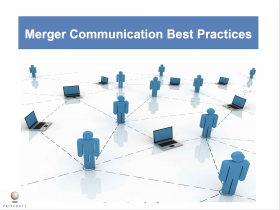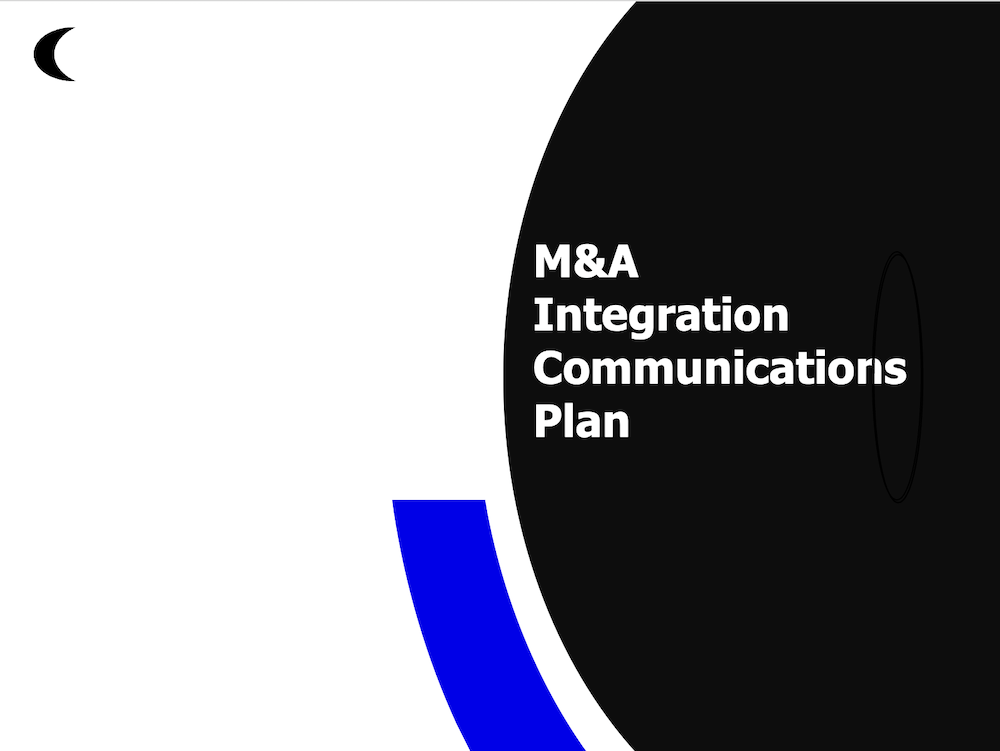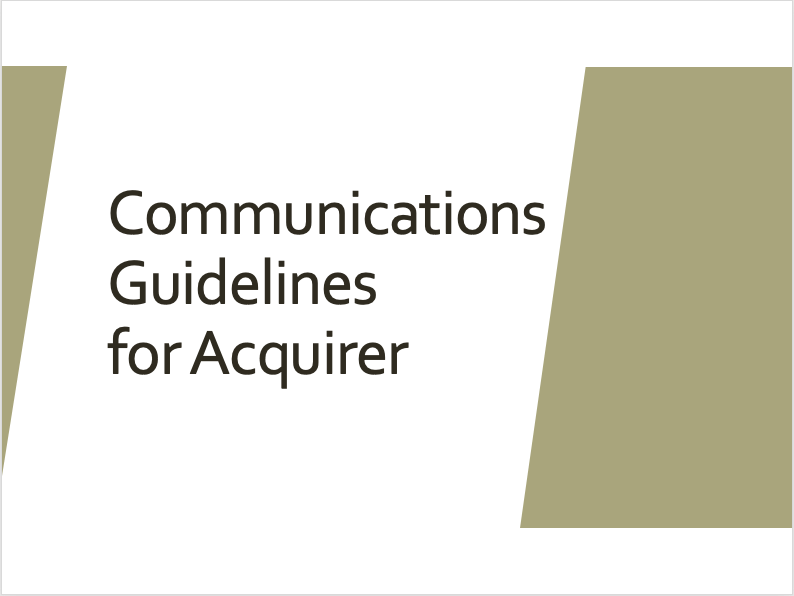27 Merger Communication Best Practices:
- Manage expectations.
- Articulate the compelling business rationale.
- Be honest and candid.
- Over-communicate.
- Create opportunities for two-way communication.
- Look for several different ways to get your point across.
- Explain the reasons for the changes.
- Ask questions.
- Seek feedback and listen.
- Prepare yourself for all types of feedback.
- Tell the “why” before the “how” or the “what.”
- Remember to capture employee feedback, questions, and concerns.
- Speak to the facts.
- Actively enlist support.
- Follow up on employee feedback and questions.
- Keep people focused and future-oriented.
- Communicate “early wins.”
- Keep everyone updated.
- Explain that leadership is needed at all levels.
- Assume that none of your answers will be “off the record.”
- Seek to understand the nature of concerns—get to the underlying issues.
- Don’t ignore controversial questions.
- Be prepared to tell employees “We don’t know yet” or “We are working on that” as responses to some questions.
- Set aside time to listen to others.
- Listen for “past” emotions and emotionally charged language for real meaning.
- Don’t assume. Ask questions. Be careful about attaching labels to what you hear.
- Stay unbiased.
Slide titles:

Merger Communication Best Practices

General Communication Best Practices

General Communication Best Practices

General Communication Best Practices

Answering Best Practices

Listening Best Practices

Pitfalls to Avoid

James Thurber Quote

Questioning Best Practices

Voltaire





